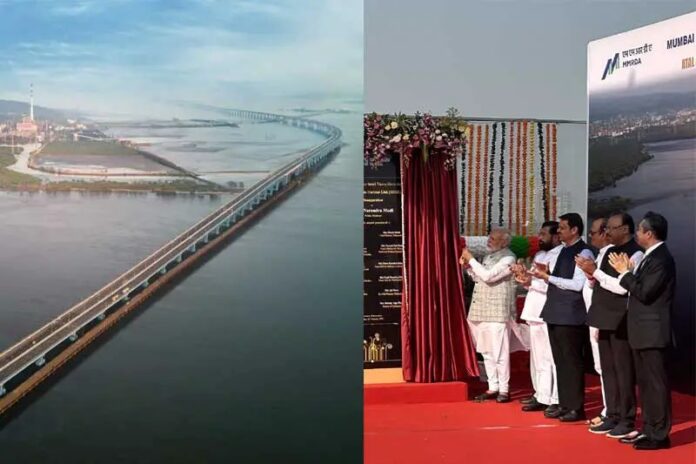Prime Minister Narendra Modi officially inaugurated the Atal Bihari Vajpayee Sewri-Nhava Sheva Atal Setu, marking a significant milestone in India’s infrastructure development. The Mumbai Trans Harbour Link, constructed at a cost of ₹17,840 crore, now stands as the longest sea bridge in the country.
Back in December 2016, PM Modi laid the foundation stone for this ambitious project, paying tribute to the late former Prime Minister Atal Bihari Vajpayee by naming it Atal Setu. Stretching across a length of 21.8 kilometers, the bridge seamlessly connects Sewri in Mumbai to the Nhava Sheva area in the Raigad district.
The inauguration of Atal Setu holds great promise for commuters, as it is expected to significantly reduce travel time between the two locations from the current two hours to a mere 15-20 minutes.
Metropolitan Commissioner of MMRDA, Dr. Sanjay Mukherjee, highlighted the technological marvel of the Mumbai Trans Harbour Link. He mentioned that various innovative technologies were employed in its construction, some of which were introduced for the first time in India. Dr. Mukherjee emphasized the bridge’s eco-friendliness, with specially designed lights that do not disturb the aquatic environment.
In terms of regulations for using the Mumbai Trans Harbour Link, the maximum speed limit for four-wheelers, including cars, taxis, light motor vehicles, minibuses, and two-axle buses, is set at 100 kmph. However, the speed will be restricted to 40 kmph on the ascent and descent of the bridge.
Certain vehicles are restricted from accessing the sea bridge, as informed by the police. Motorbikes, auto rickshaws, tractors, motorcycles, mopeds, three-wheelers, animal-drawn vehicles, and slow-moving vehicles are not permitted. Additionally, multi-axle heavy vehicles, trucks, and buses heading towards Mumbai will not have entry access on the Eastern Freeway. These measures aim to ensure the safety and efficient functioning of the Mumbai Trans Harbour Link.







